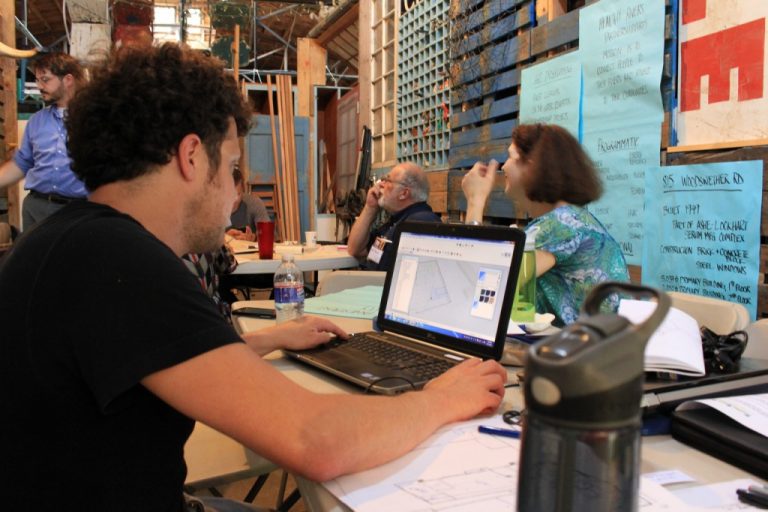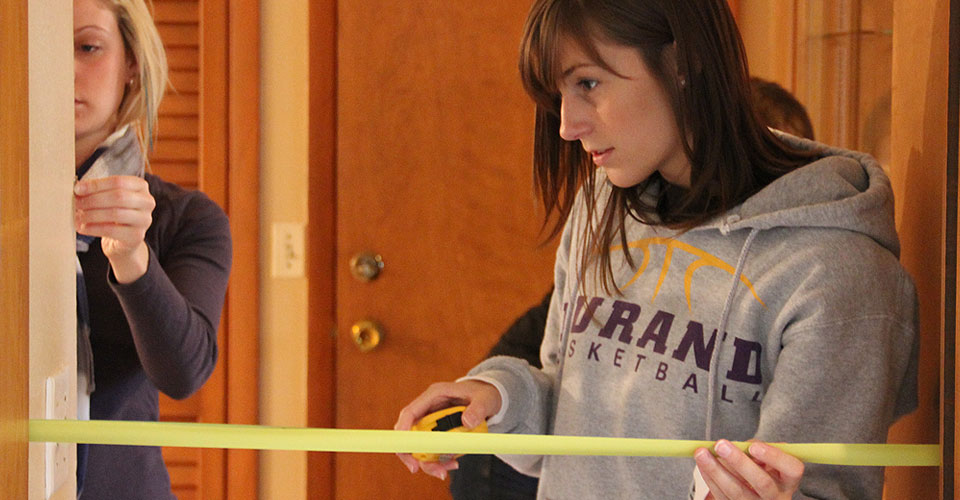Table Of Content

At the eleventh hour, abstract concepts are rejected, modified, or ignored in favor of concrete solutions. The inventory of tools, principles, and materials in the new charrette is, initially, conceptually unlimited, while the inventory of resources in the old charrette is closed. Development processes that are slow to materialize, lack authentic input, and never come to fruition can frustrate the public. By avoiding endless public meetings and breaking down specialty silos, charrettes can provide an important forum to embed people in a listening and design process with short feedback loops.

Typical Outcomes of Design Charrettes
Additionally, the charrette schedule offers tens of hours of opportunities to participate, accommodating many different schedules. In some cases, a charrette may be held on a recurring basis, such as the annual charrette held by the Landscape Architecture and Environmental Planning department at Utah State University. Charrettes such as these offer students and professionals the opportunity to work together in a close setting on real-world design scenarios, and often provide communities with tens of thousands of dollars of design work for free. COVID 19 plus travel costs have made in-person meetings risky and expensive.
Choosing the Planning Profession
Beulah master plan design charrette planned for December - Pensacola News Journal
Beulah master plan design charrette planned for December.
Posted: Tue, 21 Nov 2023 08:00:00 GMT [source]
In addition, the community’s citizens, stakeholders, and local planning department staff are also involved. Often low-cost, or free, assistance to do a charrette may be available from the local chapter of the American Institute of Architects [1]. Assistance and more detail can also be obtained from the National Charrette Institute [2]. Holly Madill is the director of the National Charrette Institute at Michigan State University, where she conducts trainings and provides consultation and facilitation for charrette and other engagement processes. Having worked with the private, nonprofit, institutional, and public sectors, she specializes in community engagement, public policy, placemaking, and development of trainings, surveys and analyses, and strategy and policy documents.
Publications
Solving community planning problems requires collaboration between city agencies and interest groups. Specialty silos exist when people are so embedded in their area of expertise or advocacy that they have difficulty understanding and appreciating other relevant positions. Historically this has played out with transportation experts clashing with planners or environmentalists clashing with developers. A successful charrette results in a feasible plan that requires minor revision and is supported by the stakeholders throughout the implementation process.
DesignCharrette.com has incorporated a new charrette management and project tracking system that has better electronic safeguards and encryption options to help private data remain secure. There will be information on this page and in other sections of the website on how to use this system for new users. Please peruse the information on this website about commercial and residential projects, if that is what you have in mind. Consider also when the last public engagement occurred and what its impact on the stakeholders and the project was.
The Institute for Quality Communities was created by the university out of a commitment to improving the communities of Oklahoma. It saw this project as an opportunity to address the critical challenge of infill development right in its own backyard. The use of this term is said to originate from the École des Beaux-Arts in Paris during the 19th century, where it was used to describe the final, intense work effort expended by art and architecture students to meet a project deadline.
In Your Community
Projects that fail in the late stages usually do so when the charrette lacked the proper efforts to be people, data, and place ready. Ensuring this readiness prevents what might be called "post-charrette meltdown," which can occur after the charrette is completed and as the community is implementing the project. A charrette (often spelled charette and often called design charrette) is an urban planning technique for consulting with stakeholders and involving them in the physical design or planning of the community. Charrettes are typically intense, possibly multi-day, events involving municipal officials, developers, and local residents. A charrette promotes joint ownership of solutions to problems and attempts to diffuse traditional confrontation between residents, developers, and local government officials. The following day, the charrette design team began developing alternative concepts for the city center area.
National Community Planning Month
Charrettes can be an alternative to designers presenting a fully conceptualized idea to the community without any feedback. With the charrette model, any interested parties are able to give valuable input during the developmental stages; this gives the most impacted parties the opportunity to speak up for what they want and don’t want. An effective charrette session comes with particular goals and objectives, and it needs a high level of public awareness. Now that you have a design charrette on the calendar, it’s time to develop ground rules for participants and for yourself. You must treat the charrette as the most important day (or days) of your project work lifecycle. The challenge to the facilitator is to amplify the magnitude and diversity of ideas, and then build up the best solution.
This is a national Cooperative Extension resource

The process helps us narrow in on what the client would like to see for the look and feel of the space. With a well-prepared team, your design charrette is more likely to generate creative, effective, and feasible solutions. By selecting an inspiring and functional location, you'll set the stage for a productive and successful design charrette. In some cases, designers may actually take the drawing as sketched by their colleague and use it as their design. But what’s more likely is that the designers will get inspired by the ideas suggested during the charrette, and garner a better understanding of their colleagues’ perspectives and goals. The next step is to explore the character’s psyche and essence more deeply using character design prompts that spark your imagination.
Volunteers sought for Ukraine rebuilding charrette CNU - Congress for the New Urbanism
Volunteers sought for Ukraine rebuilding charrette CNU.
Posted: Wed, 31 Jan 2024 08:00:00 GMT [source]
This website is using a security service to protect itself from online attacks. There are several actions that could trigger this block including submitting a certain word or phrase, a SQL command or malformed data. And, because everyone at this point agrees with what everyone has come up with, the approval process is fast. Everyone is united, and they can go back to their teams and serve as your project’s greatest promoters.
Charrettes use a collaborative design process to provide a new way for people to interact in community planning. During the multiple-day charrette, stakeholders engage in the evolution of the project design through a series of at least three review sessions or feedback loops, creating a flow of interchange between the design team and community members. Designers say that the three feedback loops "allow us to get it wrong twice." This process of the design team proposing, listening, and revising is an essential strategy for building community trust in the process. Understanding of and support for the design proposals develops as people see their feedback being addressed. When this is achieved, it is a step toward building trust between community members and with government.
For example, illustrating a setback line in a traditional zoning code and a build-to line in a form-based code allows community members to evaluate the walkability and sense of each resulting place. People begin to see that zoning decisions include many interrelated factors, including the relation of a building's form to its surroundings, parking requirements, and the realities of real estate markets, financing, and construction. People see how the data and regulations impact what they see and interact with in the built environment. Drawings also help people visualize a potential future, taking the fear out of the unknown. A charrette can be the mechanism that starts the communication process among the project team members, building (or campus) users, and project management staff. Furthermore, a charrette can be viewed as a creative burst of energy that builds momentum for a project and sets it on a course to meet project goals.
Some of these drawings showed a bird's-eye view of entire portions of the neighborhood, while some hand-drawn watercolors of street-level views showed detailed building designs. This plan describes who will be involved and how, lists base data needed, and describes the charrette or co-design process and products. This information also provides a draft project scope and an estimated budget that can be used to write a request for proposals. A project start-up meeting creates a focused team approach to project management that will guide it through the inevitable hurdles that it faces on the way to approvals and implementation. Once settled on a preferred alternative plan, the design team developed more detailed investigations and testing of the plan. Ferrell Madden worked on the main elements of the code, building form and location, and parking allocations.
The hierarchy of the streets and major sightlines are often the elements that shape zoning and development standards. Embracing community landmarks through highlighting view corridors and vistas is a great way to celebrate and reflect the value and the culture of a community, which should be highly considered in the charrette session. Students often went so far as to jump into the cart to finish their project. The path may be long and filled with egos and disagreements, but true innovation awaits those who can stay on it. If you’re going to host a design charrette for your next big project, be prepared with these guidelines. The Schools of Architecture at Rice University and at the University of Virginia call the last week before the end of classes Charrette.[10][11] At the final deadline time (assigned by the school), all students must put their "pencils down" and stop working.
In this chapter the design charrette is defined and the key characteristics and benefits are elaborated. Further, the diversity of design charrettes is explored and the key dimensions of charrettes are defined. We invite you to join us in a unique opportunity where the worlds of design and injury prevention converge to address critical safety concerns facing older adults.
Designers should encourage critical thinking by offering space for ideas and suggestions instead of seeking affirmation for the designs they provide on their end. Extrapolating from the ideas of Lévi-Strauss, Schön, and Louridas, I am led to conclude that there are aspects of the old, end-of-the-project charrette as a design process that remain relevant and valuable. This helps explain their persistence in architecture schools and for competition entries in the profession that are “design and idea driven.” The two forms of the charrette stress alternative kinds of design thinking. The new charrette is founded on planning and problem-solving, the old on improvisation and bricolage.

No comments:
Post a Comment